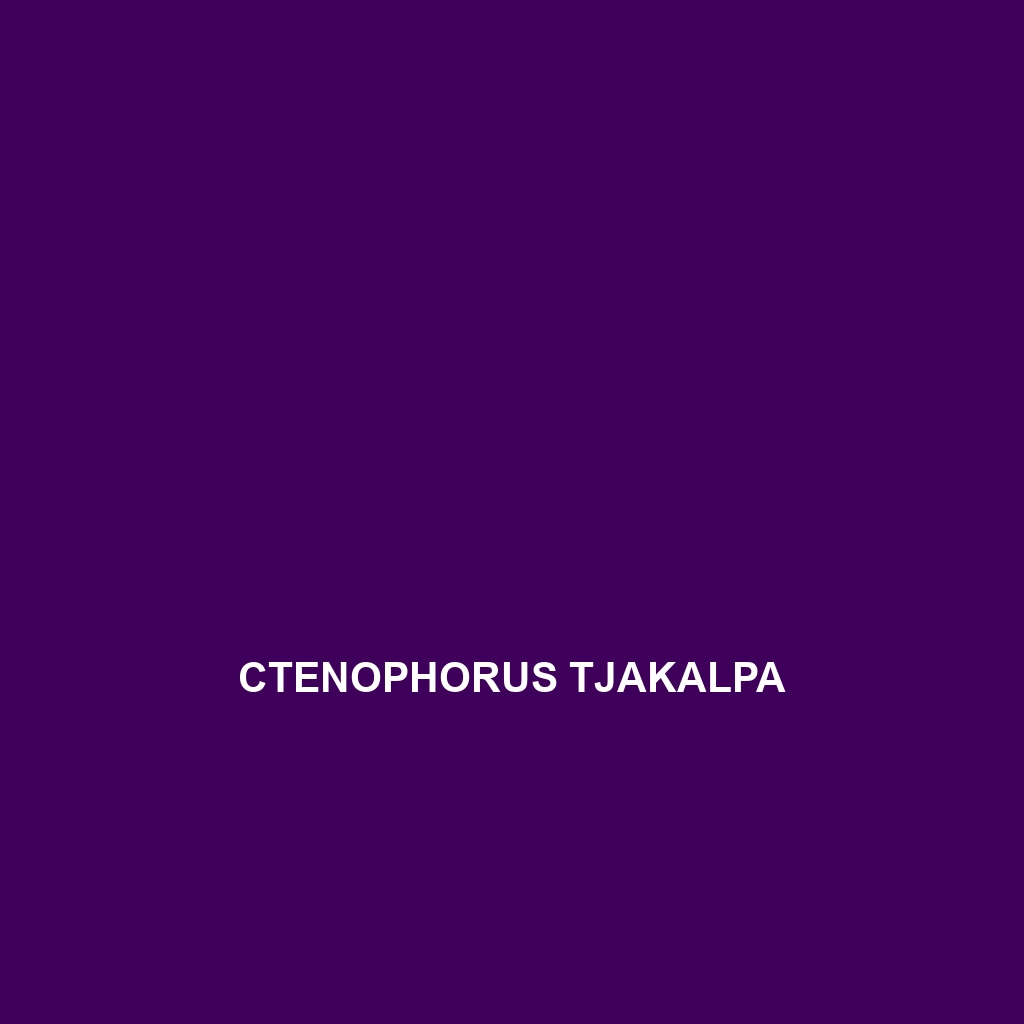Ctenophorus tjakalpa Species Description
Common Name: Ctenophorus tjakalpa
Scientific Name: Ctenophorus tjakalpa
Habitat
Ctenophorus tjakalpa, commonly known as the tjakalpa dragon, is primarily found in the arid regions of Australia. Specifically, this species inhabits the rocky outcrops and scrublands of central to western Australia, often thriving in sandy and gravelly soils. Their preferred environment includes ranges, hills, and flat areas where they can easily hide from predators.
Physical Characteristics
This lizard species typically ranges in size from about 15 to 25 centimeters in total length. Ctenophorus tjakalpa exhibits a striking coloration, with males predominantly displaying vibrant hues of blue and orange during the breeding season, while females exhibit more subdued tones of brown and beige for camouflage. Their slender bodies, elongated tails, and distinctive crest of spines on the dorsal side make them easily identifiable in their natural habitat.
Behavior
Ctenophorus tjakalpa is known for its territorial behavior, especially during the mating season where males engage in elaborate displays. These displays include push-up motions and color changes to attract females and ward off rivals. This species is diurnal, being most active during the day, and is often seen basking on rocks or low shrubs. They exhibit quick reflexes and can perform agile movements to escape threats.
Diet
The diet of Ctenophorus tjakalpa primarily consists of insects and other small invertebrates. Common food sources include ants, beetles, and grasshoppers, making them important for controlling insect populations in their ecosystems. Their foraging skills also contribute to their adaptability, as they can hunt both on the ground and within vegetation.
Reproduction
Breeding season for Ctenophorus tjakalpa typically occurs in the spring months, where males establish territories and perform displays to attract females. Females lay clutches of 2 to 7 eggs in a sandy substrate, which they bury to protect them from predators. After an incubation period of approximately 6 to 8 weeks, hatchlings emerge, resembling miniature adults and capable of independent survival from birth.
Conservation Status
Ctenophorus tjakalpa is currently classified as Near Threatened according to the IUCN Red List. Habitat destruction and climate change pose significant threats to their populations, necessitating ongoing conservation efforts to ensure their survival in the wild.
Interesting Facts
One of the most fascinating aspects of Ctenophorus tjakalpa is its remarkable color-changing ability, which not only aids in communication during mating rituals but also serves as camouflage. Additionally, this species has adapted to survive in harsh environments, showcasing its resilience amidst changing ecological conditions.
Role in Ecosystem
Ctenophorus tjakalpa plays a crucial role in its ecosystem by maintaining the balance of insect populations and serving as prey for larger predators. Its behaviors contribute to soil aeration and plant pollination, further illustrating the interconnectedness of species within its arid habitat.
